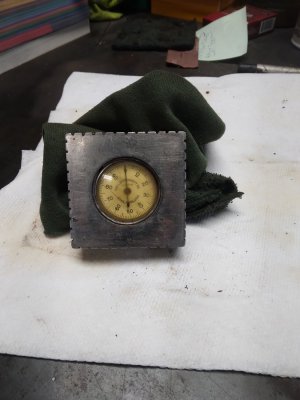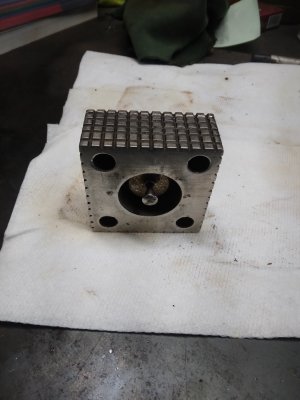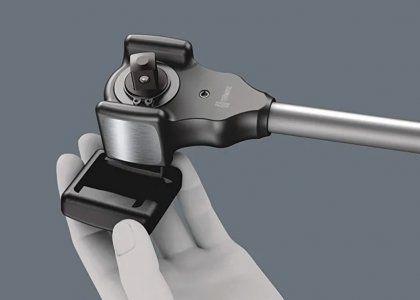-
Welcome back Guest! Did you know you can mentor other members here at H-M? If not, please check out our Relaunch of Hobby Machinist Mentoring Program!
You are using an out of date browser. It may not display this or other websites correctly.
You should upgrade or use an alternative browser.
You should upgrade or use an alternative browser.
What's it?
- Thread starter snoopdog
- Start date
- Joined
- Mar 31, 2015
- Messages
- 397
Wow, ok. Definitely a Starrett back plunger indicator. Is it a press fit?!? So you have to press it in and out to adjust it? Can you still spin it inside the bezel to zero it?
Look like a fancy depth gauge for wide surfaces?
Maybe to measure the depth of something rough or pointy like a gear in relation to an adjoining surface?
Looks like a bit of effort went into it! I like the serrated edge details.
Any idea what the extra 4 holes are? Merely ’lightening’?
Or maybe they cleared bolt/screw heads?
Look like a fancy depth gauge for wide surfaces?
Maybe to measure the depth of something rough or pointy like a gear in relation to an adjoining surface?
Looks like a bit of effort went into it! I like the serrated edge details.
Any idea what the extra 4 holes are? Merely ’lightening’?
Or maybe they cleared bolt/screw heads?
Last edited:
- Joined
- Sep 28, 2013
- Messages
- 4,306
flatness comparator?
- Joined
- Dec 27, 2021
- Messages
- 572
(Maybe to measure the depth of something rough or pointy like a gear in relation to an adjoining surface?)Wow, ok. Definitely a Starrett back plunger indicator. Is it a press fit?!? So you have to press it in and out to adjust it? Can you still spin it inside the bezel to zero it?
Look like a fancy depth gauge for wide surfaces?
Maybe to measure the depth of something rough or pointy like a gear in relation to an adjoining surface?
Looks like a bit of effort went into it! I like the serrated edge details.
Any idea what the extra 4 holes are? Merely ’lightening’?
Or maybe they cleared bolt/screw heads?
I think this is probably the right direction, I originally thought a flatness or step comparator, like Matt suggested. However, the button does not recede past the surface, if I phrased that right. I can't turn the bezel by hand, with a small instrument, maybe. As far as the 4 holes, lightening maybe, it is stupid heavy, but I'm gonna guess a locating feature for now. I haven't tried pushing it in or to adjust.
- Joined
- Nov 28, 2016
- Messages
- 2,352
Looks to me like some quick inspection gauge. Holes could be for alignment to the part being inspected.
GsT
That would be my guess... a purpose made tool to measure a specific feature...
It's pretty neat, anyway.
-Bear
- Joined
- Oct 29, 2012
- Messages
- 1,328
- Joined
- Apr 23, 2018
- Messages
- 6,532
along with a ratchethammer.
Who would buy that? All ratchets have hammers, everybody knows that!




